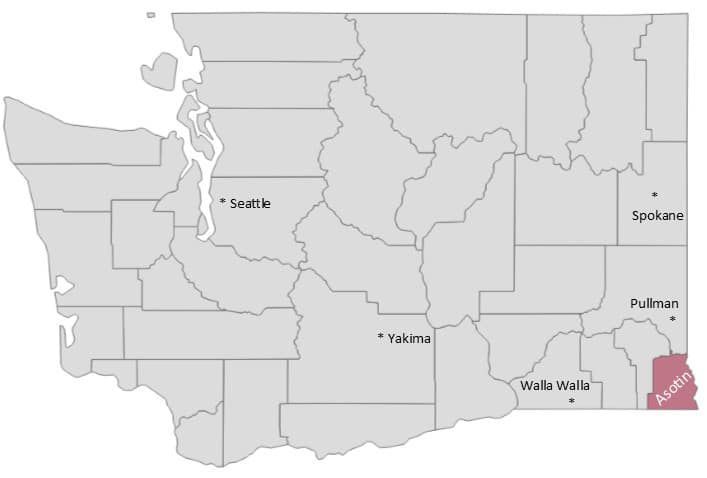Asotin County revolutionizes how it serves families by putting them in charge of their own housing solutions.

Building Changes answered the county’s call for outside assistance last year through a Washington Youth & Families Fund grant designed to enhance the county’s existing structure for delivering services to families experiencing homelessness. It became apparent early on, though, that the county’s traditional approaches were resulting in frustrating situations for both families and caseworkers. Caseworkers felt like families weren’t taking advantage of the service-rich, intensive program they had developed, and families weren’t finding solutions that met their needs.
To their credit, Asotin County’s providers didn’t double-down on a strategy that wasn’t serving families well. Instead, they asked Building Changes if we could help improve their service strategies and effectively revolutionize the way families experiencing homelessness are served in Asotin County.
“One of the things that has been so great about Asotin County is that the folks there are so open to learning, feedback, and training,” says Emily Mirra, Building Changes senior manager for grantmaking and capacity building.
So we ripped up the initial design for the three-year grant. In its place, we are working with county providers to prepare them for a full-scale implementation of Diversion, which is planned for July. Diversion is a strategy that helps families resolve their housing crisis quickly and safely—without having to rely on traditional housing resources offered through the homeless system.
For some Asotin County families, Diversion will be their best path to become housed. The size of Asotin County (22,500 in population) and its remote location create a challenging market for Rapid Re-Housing, which has been the main service offered to families experiencing homelessness. Landlords willing to rent to families enrolled in Rapid Re-Housing services are few and far between. A greater supply of affordable rental housing sits just across the river in Lewiston, Idaho—but the county is barred from spending its allocated Rapid Re-Housing subsidies there.
Asotin County’s foray into Diversion began in February when Building Changes came to visit for a full day of meetings and training with the grantee, Quality Behavioral Health, and several other community organizations. Representatives from quite possibly every entity that serves families experiencing homelessness in the county accepted our invitation to take part. In addition to Quality Behavioral Health, they included the state Department of Social and Health Services, the region’s community college, school counselors, a parent-and-child advocacy group, an LGBTQ support group—even the county library.
Putting power in the hands of families represents a culture change for a lot of caseworkers.
—Klarissa Monteros
In May, we returned to present a two-day, in-depth Diversion training to the providers. Our Diversion training is designed to help caseworkers move away from the conventional mindset that it is their job to “fix” families with top-down solutions. We role-play the problem-solving conversations between providers and families that are at the heart of Diversion, with caseworkers learning techniques on how to draw out of families their own creative ideas for resolving their homelessness.
Standards of racial equity are embedded throughout our Diversion training. In Asotin, for example, we helped providers understand root causes behind the overrepresentation of American Indians in their county’s homeless system so they can address the concerns of American Indian clients with empathy and positive reinforcement.
“Putting power in the hands of families represents a culture change for a lot of caseworkers,” says Klarissa Monteros, the Building Changes senior manager who provided the Diversion training in Asotin. “During our role plays, if someone acting as the caseworker said something that sounded too much like a top-down solution, the other people in the room would yell out, ‘Fixing! Fixing!’ and everybody would laugh.”
